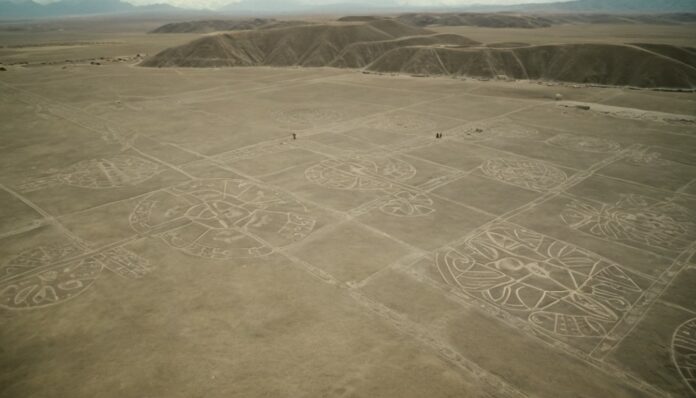The Nazca Geoglyphs, also known as the Nazca Lines, are one of the most mysterious and fascinating places on Earth. Located in the Nazca Desert of southern Peru, these massive drawings were created by the ancient Nazca people between 500 BCE and 500 CE. The geoglyphs are spread over 50 square kilometers and depict various animals, plants, and geometric shapes.
Despite being discovered in the early 20th century, the Nazca Geoglyphs continue to baffle scientists and researchers. The lines are so large that they can only be fully seen from the air, which raises questions about how and why the Nazca people made them. Some believe they were created for religious or astronomical purposes, while others think they might have been used for irrigation or mapping.
The Incredible Designs
The Nazca Lines include hundreds of individual figures, ranging from simple lines to complex shapes. Some of the most famous geoglyphs are the hummingbird, spider, monkey, and fish. These figures are impressively large, with some stretching over 200 meters across. The precision and scale of these drawings demonstrate the advanced skills of the Nazca people.
Creating these geoglyphs was no small feat. The Nazca people removed the dark surface stones to reveal the lighter ground beneath, forming the shapes we see today. Despite being over a thousand years old, the lines have remained largely intact due to the dry, stable climate of the desert, which has helped preserve them.
The Mystery of Their Purpose
One of the biggest mysteries surrounding the Nazca Geoglyphs is their purpose. Some researchers believe the lines had astronomical functions, aligning with stars or solstices to mark important dates or events. Others think the geoglyphs were part of religious ceremonies, serving as offerings to the gods or as pathways for rituals.
Another theory suggests that the lines were used for water-related purposes. The Nazca people relied heavily on underground aquifers, and some believe the geoglyphs might have been part of a complex system to locate and manage water sources. Despite various theories, the true purpose of the Nazca Lines remains one of the great unsolved mysteries of archaeology.
Modern Discoveries and Research
In recent years, modern technology has provided new insights into the Nazca Geoglyphs. Drones, satellite imagery, and ground-penetrating radar have allowed researchers to discover new lines and better understand their construction. These tools have revealed previously unseen details and patterns, enriching our knowledge of this ancient marvel.
Archaeologists and scientists from around the world continue to study the Nazca Lines, hoping to unlock their secrets. Each new discovery brings us closer to understanding the people who created these incredible designs and the reasons behind their monumental efforts.
A UNESCO World Heritage Site
In 1994, the Nazca Geoglyphs were designated a UNESCO World Heritage Site, recognizing their cultural and historical significance. This status helps protect the lines from damage and ensures that they are preserved for future generations to study and appreciate. Thousands of tourists visit the site each year, marveling at the scale and beauty of these ancient artworks.
Being a UNESCO World Heritage Site also promotes international awareness and research. It highlights the importance of preserving such unique and irreplaceable cultural treasures, fostering collaboration between governments, researchers, and local communities.
Visiting the Nazca Geoglyphs
Today, visitors can see the Nazca Geoglyphs from various vantage points. The best way to view them is from the air, with small planes offering aerial tours that provide a stunning perspective of the lines. There are also observation towers and hilltops that offer good views of some of the geoglyphs for those who prefer to stay on the ground.
Tourists and researchers alike are captivated by the mystery and beauty of the Nazca Lines. The experience of seeing these massive, ancient drawings firsthand is unforgettable, leaving many with a sense of wonder and curiosity about the people who created them and the secrets they left behind.
